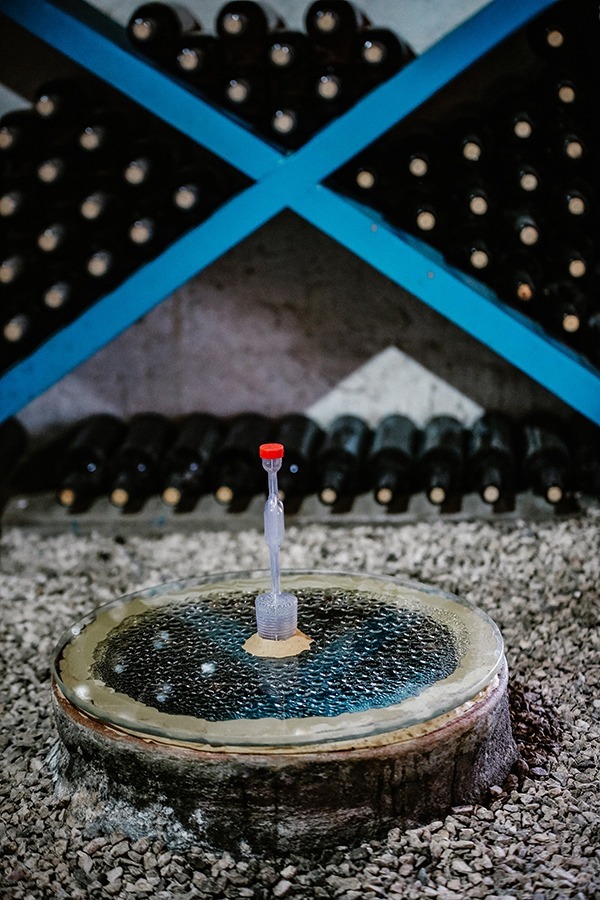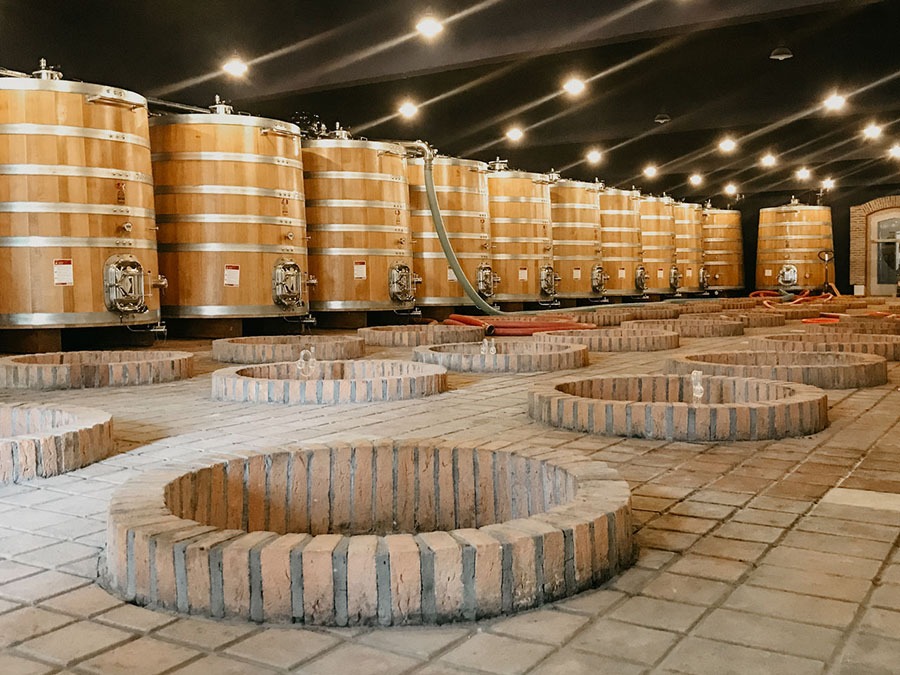Georgian Traditional method of making wine in Qvevri

1. Cleaning – The procedure begins with a tidy, thoroughly rinsed qvevri. Traditionally, a worker empties a vessel of its sediments before climbing inside to clean the walls (see the cleaning tools described below). The qvevri is then rinsed many times with clear water after being cleaned with an alkaline solution.
2. Crushing – The winemaker crushes the bunches of grapes in a traditional stone or wooden wine press known as a satsnakheli after sorting the grapes. The grape must is then filled to three-quarters of the qvevri’s capacity, usually with all or some of the marc and stalks. Red or white grapes may be used, but the amber wines made in qvevri from these grapes are the most well-known traditional Georgian wines.

3. Fermentation – Using naturally occurring yeasts and natural (underground) temperature control, fermentation occurs without human interference. During fermentation, producers often pound down the lid and swirl the vat. Usually, fermentation takes three weeks.
4. Sealing the qvevri – The qvevri is closed with a lid (made of stone, glass, or metal) and a clay- or silicone-based sealer when the cap begins to settle and the producers decide fermentation has finished.
5. Maturation – For the first three to six months of wine maturation, producers allow the solids to macerate in the qvevri before removing them. Red wines and some white wines have a shorter aging period. Before racking the wine off the lees, producers who desire malolactic conversion to occur during fermentation (particularly with red wines) will occasionally warm the qvevri with a heating device. The slanted walls of the qvevri allow the wine to circulate above while the yeast and sediment settle at the bottom.
6. Storage – When the wine is ready in the spring, the winemaker either bottles it or moves it to another qvevri for a year of additional maturing or short-term storage (because Georgian wine is frequently drank before the next harvest).
Experimentation
Although modern Georgian winemakers continue to use and value their traditional winemaking methods, they are also exploring new ideas and raising new concerns. The winemaking process is being experimented with, according to Granik: “Today, many producers are informed by tradition but not constrained by it.”

They are experimenting with various indigenous grape varieties, various grape presses, varying stem content, varying time in the vat, wines prepared without skin contact, various qvevri cleaning procedures, and various vat types, including stainless steel tanks and wood barrels.
Additionally, producers are experimenting with wines that are not often connected to Georgia:
• Dry wines from grapes that traditionally yield semisweet wines
• Rosé wines from a range of indigenous red grapes
• Qvevri-fermented pet-nat sparkling wines
• Red wines and amber wines made for aging
Georgia’s winemakers are dedicated to making intriguing, high-quality wines the old-fashioned manner while also coming up with innovative solutions to the difficulties involved in making low-intervention wines.





Leave a Reply
You must be logged in to post a comment.